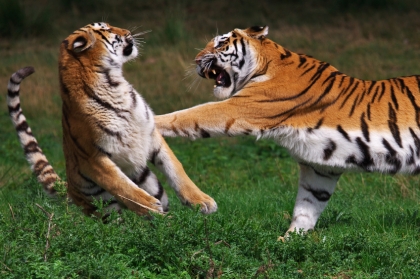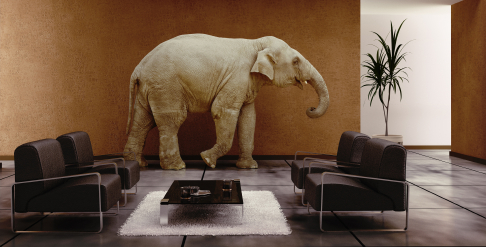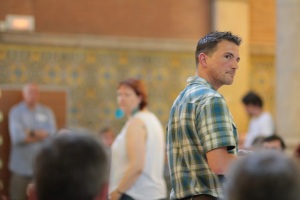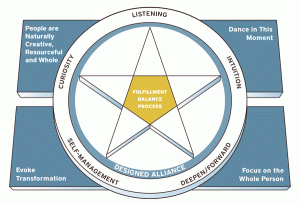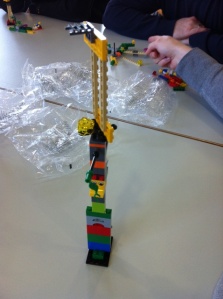About half a year ago I announced the Conflict Dojo on my blog and asked volunteers to try out the format. Before publishing the instructions for everybody I thought I could need some help for improving this new format.
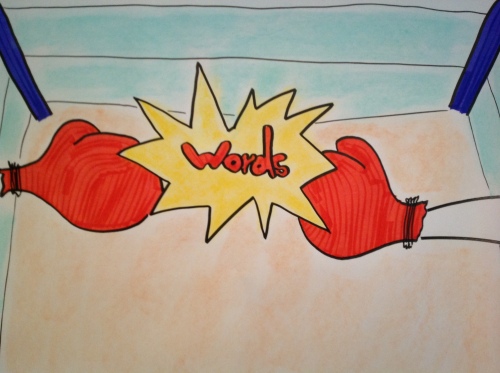
I’d like to thank Andrea Chiou, Ruud Rietveld, Nils Bernert, Silke Rothgänger and Stefano Klinke for giving me feedback and helping me to make the format more simple, more safe and now it can be fun as well! =;-)
The Conflict Dojo is still easy to scale
You can arrange settings from 4 up to xxx people without having a facilitator for each table. Now one Facilitator can easily handle settings up to 20 people. If you have more, count one facilitator per 20 people.
As I’ve created the format as part of a 2-day conflict handling training for Agile Teams, you’ll need at least 90 minutes to run the basic version of the Conflict Dojo. The more time you have, the better it is as you’ll be able to play several rounds. On the other side of the coin, even one round can be very exhausting due to intense discussions and can take up to 1 hour.
Preperation
Create settings with tables for 4 people, 3 can be ok as well if needed. I recommend and prefer 4 people per table. For each table you’ll need to prepare the following:
- tabletoys
- 1 dice
- a pile of plane A5 index cards – red – called challenge cards
- a pile of plane A6/A7 index cards – yellow/white – called strategy cards
- marker
- 4 prepared plane A6/A/ index cards in yellow or white (strategy cards) with
- fight back
- ignore & avoid that there is a conflict
- solution focused questioning
- NVC (Non-Violent-Communication)
Connection
Let everybody take some red and some yellow index cards and a marker. Build pairs. Let the pairs talk about the question ‘remember some old or current conflicts’, write down each conflict on a red Index Card – one card per conflict. Now think about how you’ve handled these conflicts, did you had a solution, have you made the conflict worse? What was your strategy? Write down each strategy / handling-type on one yellow index card. Elaborate what you have written down with your partner.
Concept
Introduce the ice-berg-model and explain how conflicts emerge. As a little help, here is the description of Paul Watzlawick’s model of communication:
A conflict exists, when the Iceberg’s collide on the level of relationship. Pure contentions on a factual level are almost handled as solvable or not solvable problems and challenges or seen as a conflict of opinion or dispute.
Tension and differences are becoming conflicts when involved parties are not able to handle them constructively anymore.

Reconnection
Find a table, 2 pairs at each table. You have 5 minutes to introduce your conflicts and strategies. Try to explain why in each situation the IceBergs’s did collide.
Concrete Practice
Arrange all red challenge cards on the table so that you can read all the conflicts. Build on pile of cards with all strategy cards, now integrate the prepared cards as well. Shuffle the pile of strategy cards. At the end place them on the table, face down.
Give a short explanation of the prepared strategies:
fight back
you feel offended and do what ever is needed to protect yourself and fight back with words
ignore & avoid that there is a conflict
try to ignore all direct addresses and speeches, talk about something else
solution focused questioning
try to find a solution, ask questions, be empathic
NVC (Non-Violent-Communication
explain the 4 part process of NVC
All 4 players role the dice ones. The player with the lowest points will start the first round of the Conflict Dojo. The first player can now choose a conflict he would like to practice. Normally this will be a conflict the player currently has.
All three others at the table take one strategy card without showing it to somebody else. They will also role the dice again to find the second player – count clockwise if you want. When the second player is found, the 2 others put back their strategy card at the bottom of the pile and they become observers.
Before starting the role play, give all 2 players about a minute to prepare and sink into their roles. The first player will have to address the conflict with the second player. As the second player will have to act as the strategy card tells him, his reaction might be not his normal reaction.

The player who addresses his conflict can change his strategy during the role play, the second player should stay at his ‘card-given’ strategy. The observers make notes during the conflict on an index card.
The current round is over as soon as the conflict is solved or one player shows his stop sign. A stop sign can be a raising hand, a prepared card or whatever you agree on upfront.
Conclusion
After a round is finished, make a debriefing – this might take a few minutes as all 4 players will discuss what happened and how their behavior was influenced.
When the debriefing is finished, the player to the left of the previous first player will become the new first player. All others will take a strategy card and role the dice again until the new second player is found. A new round of the Conflict Dojo is about to start.
final conclusion
After the last round is played, let participants pair up, if possible with somebody they haven’t talked to so far. Give a timebox of 5 minutes for everybody to have a walkabout and discuss the question, ‘what do I take with me out of this session and how will I integrate it in my daily life?’.


